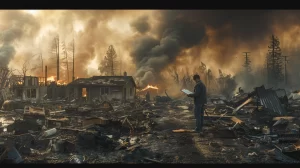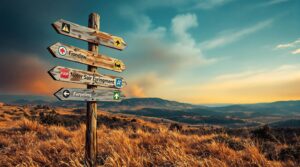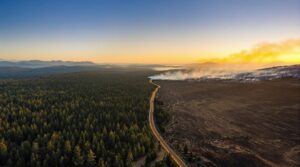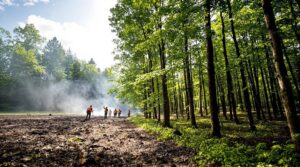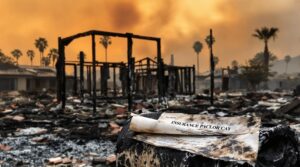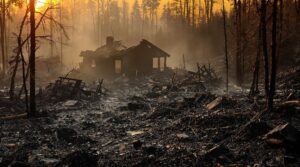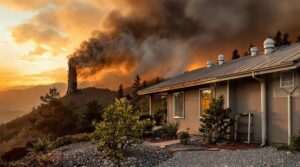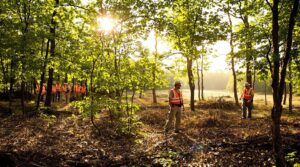To guarantee safety during wildfires, prepare an emergency Go-Kit with essentials for three days and stay updated on local fire alerts. Develop a family evacuation plan and routinely monitor Air Quality Index (AQI) levels, especially for high-risk groups. Make your home defensible by creating a 30-foot buffer zone and use fire-resistant materials. Protect indoor air quality, prioritize health, and plan outdoor activities wisely. Learn about safe post-wildfire actions and water safety protocols. Discover additional essential strategies next.
Key Takeaways
- Assemble a Go-Kit with essentials like food, water, medications, and important documents for at least three days.
- Develop and regularly practice a family evacuation plan with multiple escape routes.
- Monitor AQI levels and reduce outdoor activities when air quality is unhealthy due to wildfires.
- Create a defensible space by removing vegetation and using fire-resistant materials around the home.
- Return only when officials declare areas safe and ensure water sources are uncontaminated post-wildfire.
Prepare an Emergency Go-Kit
An essential component of wildfire preparedness is assembling an Emergency Go-Kit, which should be meticulously equipped to sustain individuals for at least three days. The Go-Kit must include non-perishable food and one gallon of water per person per day. Additionally, essential medications are imperative for those with specific health needs.
A well-stocked First Aid Kit is essential, containing supplies like bandages, antiseptic wipes, and pain relievers to manage potential injuries during evacuation. Furthermore, a battery-powered or hand-crank radio is indispensable for receiving emergency updates.
Important documents, including identification, insurance policies, and medical records, should be stored in a waterproof container for quick access. To enhance safety, pack flashlights with extra batteries, a multi-tool, and a whistle for signaling help.
These items collectively guarantee that individuals are prepared to respond effectively in the face of wildfire threats, prioritizing safety and readiness above all. Having a detailed home inventory with photographs and values of your belongings will expedite insurance claims if evacuation becomes necessary.
Stay Informed About Local Fire Alerts
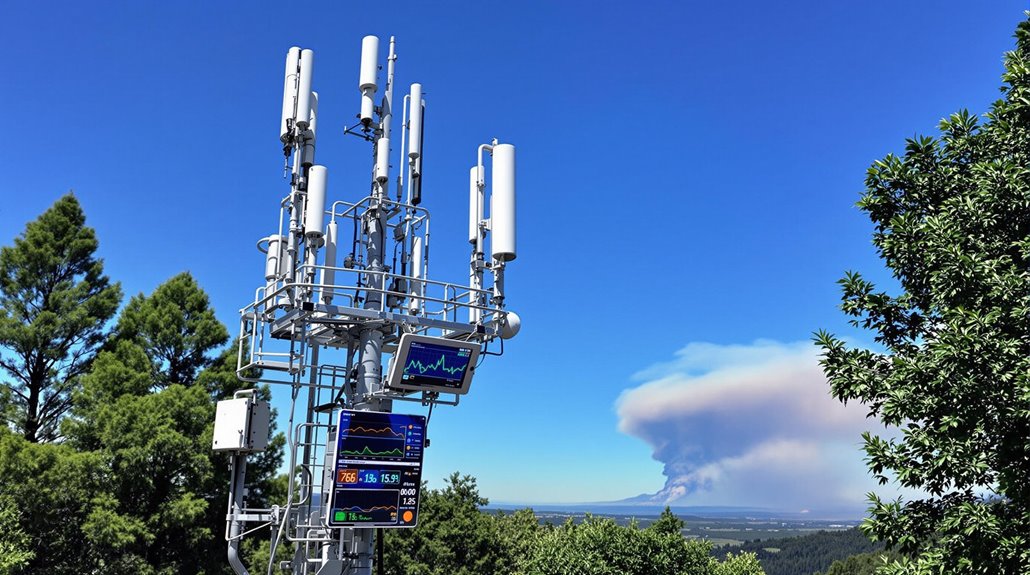
To enhance preparedness for wildfires, individuals should sign up for local emergency alerts to receive real-time notifications regarding wildfire conditions and evacuation instructions.
Regularly monitoring local news and radio broadcasts is essential, as fire activity and weather conditions can shift rapidly and unpredictably.
Additionally, accessing online resources, such as state fire websites and the Air Quality Index, can provide valuable insights into current fire risks and air quality levels, ensuring informed decision-making.
Sign Up for Alerts
Numerous local governments and emergency agencies provide essential alert services that can be accessed through text, email, or app notifications, ensuring individuals receive timely updates on wildfire situations.
Signing up for these free emergency alerts is vital to stay informed about evacuation orders, fire conditions, and safety information directly from authorities.
These alerts offer real-time updates, helping individuals gauge the urgency of situations and prepare Go-Kits for potential rapid evacuations.
In addition, staying informed through alerts enables monitoring of air quality changes, which can impact health during wildfires.
Registration is typically available online, with options to receive alerts specific to one's community or areas of interest.
Monitor News Regularly
Staying informed about local fire alerts is essential for ensuring safety during wildfire events. Individuals should monitor news regularly by checking local TV, radio, or online platforms for timely updates.
Signing up for emergency alerts from your local government websites or apps provides real-time notifications on evacuations and safety measures. It is vital to monitor the National Weather Service for fire weather conditions, such as red flag warnings and heat advisories.
Social media channels of local emergency services offer immediate alerts on wildfire threats and necessary precautions. Additionally, websites like InciWeb or local fire departments provide thorough information on active fires, containment efforts, and community resources, ensuring individuals remain informed and prepared. Being especially vigilant when humidity drops below 30% can help identify periods of increased fire risk.
Develop a Family Evacuation Plan
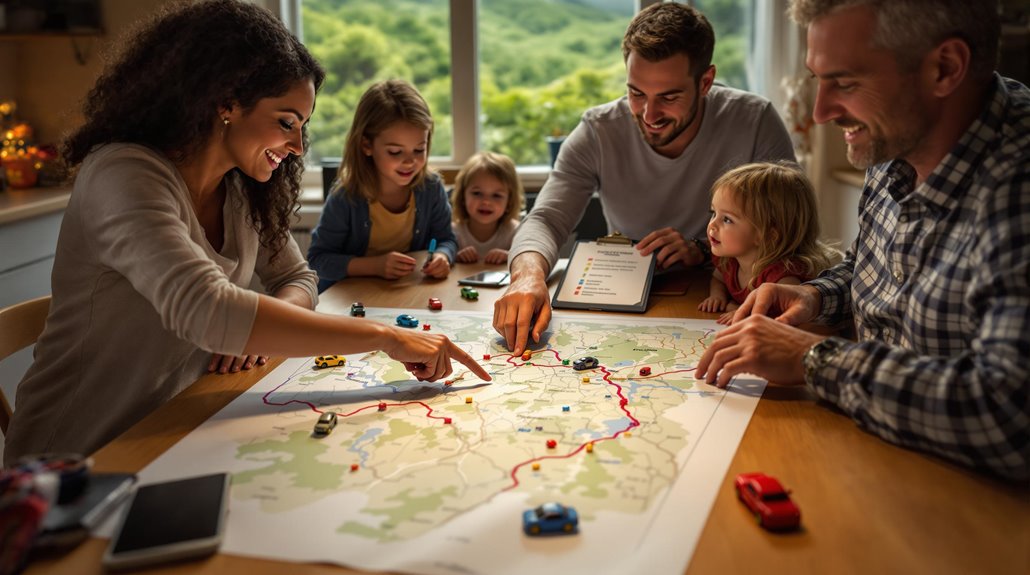
Creating a family evacuation plan is an important step in guaranteeing safety during a wildfire emergency. It is essential for families to collaborate on a thorough evacuation plan that includes multiple escape routes and designated meeting points.
Consulting with local government websites and resources can provide valuable information on safe routes and emergency protocols. Each family member should be involved in the planning process, understanding their specific roles to enhance readiness and minimize panic.
Regularly conducting evacuation drills familiarizes everyone with procedures, guaranteeing a smooth and efficient evacuation when needed.
Maintaining an updated family emergency contact list is critical. Copies should be kept in both the Go-Kit and at home to facilitate rapid communication during an evacuation.
Staying informed about local emergency alerts and wildfire risks allows families to adjust their plans promptly, prioritizing safety. This proactive approach guarantees that families are prepared to act swiftly and effectively in the face of a wildfire threat.
Families in high-risk areas should consider working with insurance providers that offer Wildfire Defense Services for additional protection and emergency response support.
Understand Air Quality Indicators
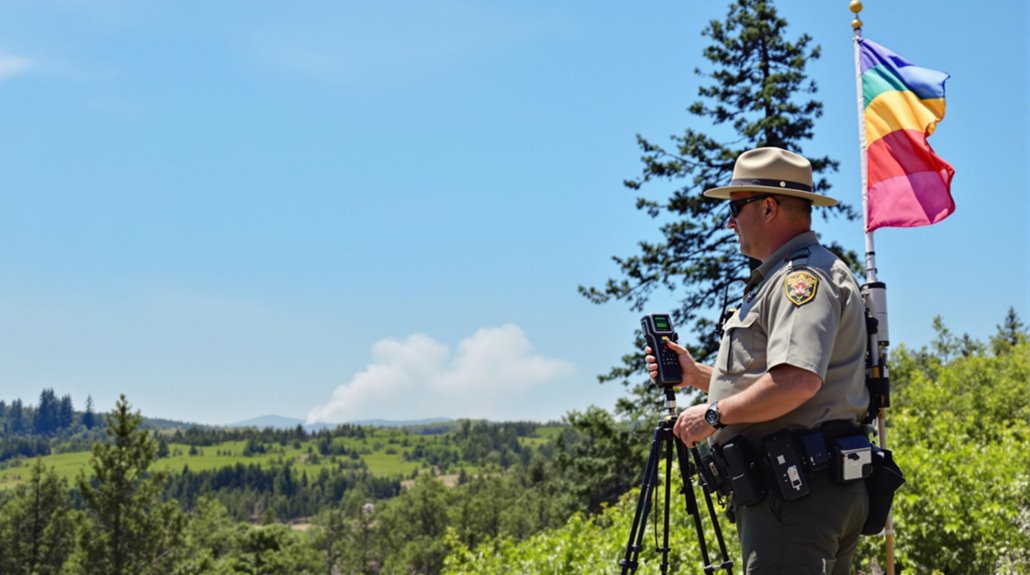
Understanding air quality indicators is essential during wildfire events, as the Air Quality Index (AQI) provides important information about the concentration of harmful pollutants.
Monitoring AQI levels is necessary for safety, especially when they reach "Unhealthy" levels or higher, prompting caution and reduced outdoor activity.
Identifying health risk groups, such as children, the elderly, and those with respiratory conditions, helps prioritize protective measures to minimize exposure to hazardous air conditions.
Assess Air Quality Levels
How does one effectively assess air quality levels during wildfire events? Understanding the Air Quality Index (AQI) is essential.
The AQI, ranging from 0 to 500, provides a clear measure of air health; lower values represent better air quality. Wildfire smoke can drastically affect this index, often elevating AQI values to "Unhealthy" or "Hazardous" levels.
There are six AQI categories: Good, Moderate, Unhealthy for Sensitive Groups, Unhealthy, Very Unhealthy, and Hazardous. Significantly, even a "Moderate" AQI can pose health risks during wildfires due to increased smoke and particulate matter.
Sensitive individuals, such as children and those with respiratory issues, must exercise caution and consider limiting outdoor activities when AQI levels reach "Unhealthy for Sensitive Groups" or higher.
Monitor AQI for Safety
Monitoring the Air Quality Index (AQI) is essential for ensuring safety during wildfire events. The AQI categorizes air quality into six levels, ranging from "Good" to "Hazardous," providing a clear indicator of when outdoor activities should be limited.
Wildfires often elevate AQI levels to "Unhealthy," posing significant risks, especially for those with heart or lung conditions. An AQI over 100 indicates caution for all, urging the reduction of outdoor exertion. This is vital when particulate matter (PM2.5), a primary wildfire pollutant, becomes prevalent. It penetrates deeply into the lungs, exacerbating health issues.
Regularly checking the AQI can guide decisions on evacuations and implementing protective measures, such as using air filters and keeping windows closed, to safeguard indoor air quality.
Identify Health Risk Groups
Who exactly is at risk when wildfires ravage the environment and air quality plummets? Sensitive groups such as children, the elderly, pregnant women, and those with pre-existing respiratory or cardiovascular conditions are particularly vulnerable. The Air Quality Index (AQI) provides essential guidance, categorizing air quality from Good to Hazardous. When AQI levels reach Unhealthy or worse, these groups should limit outdoor exposure.
| AQI Level | Precautionary Advice |
|---|---|
| Good/Moderate | Safe for outdoor activities |
| Unhealthy for Sensitive Groups | Limit outdoor activities |
| Unhealthy/Very Unhealthy | Stay indoors, use air filters |
| Hazardous | Consult healthcare provider, consider relocation |
Understanding PM2.5 levels is significant to recognize when air quality is hazardous. Prolonged exposure can lead to severe health effects, necessitating immediate protective actions. Monitoring AQI can help safeguard health during wildfires. Smoke inhalation risks can worsen pre-existing respiratory conditions like asthma and bronchitis, making air quality monitoring critical for vulnerable populations.
Make Your Home Defensible
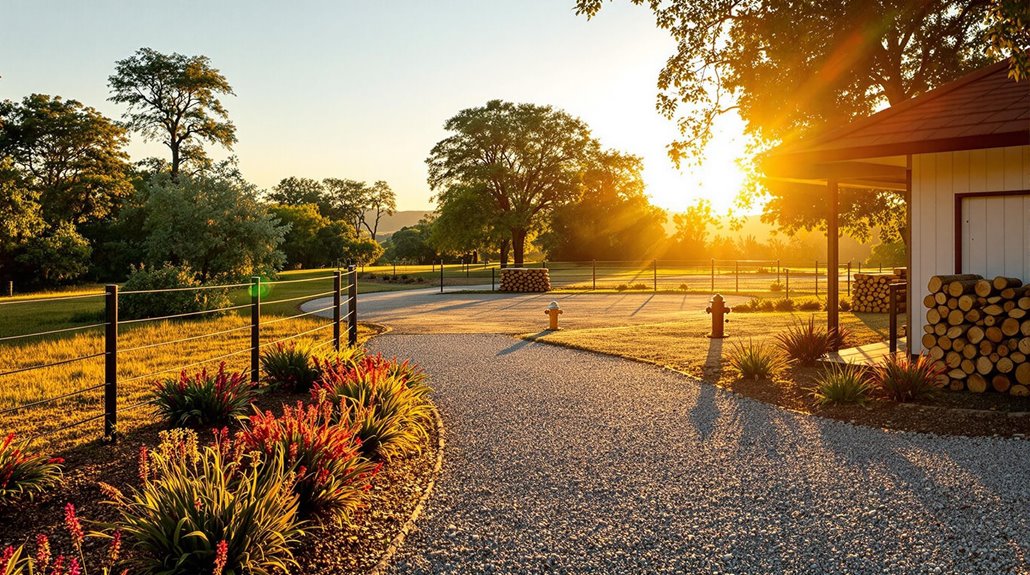
Creating a defensible space around a home is an essential step in wildfire preparedness, greatly reducing the risk of fire impact. This involves establishing at least a 30-foot buffer by removing dead vegetation and maintaining trimmed grass, effectively minimizing available fire fuel.
Utilizing fire-resistant building materials for roofs, walls, and decks is imperative, as these materials can help prevent embers from igniting the structure during a wildfire.
Additionally, maintaining a clear zone around the property is essential. Firewood, propane tanks, and other flammable materials should be stored at least 30 feet away from the home to prevent potential ignition sources.
Regular cleaning of gutters and removal of debris from roofs and eaves are also necessary, as these areas can accumulate flammable materials.
Incorporating fire-resistant landscaping, such as native plants that require less water, further enhances the home's resilience against wildfires compared to non-native varieties.
With FAIR Plan policies doubling between 2020 and 2024, homeowners in high-risk areas should implement these protective measures to potentially secure better insurance coverage options.
Learn Essential Emergency Skills
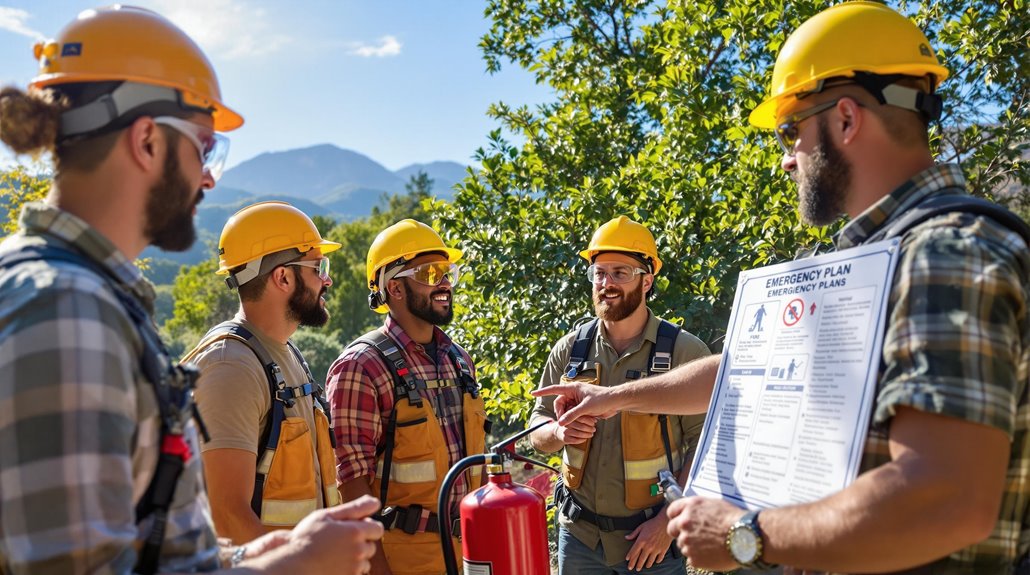
Acquiring essential emergency skills is important for effective wildfire response, beginning with mastering basic first aid techniques.
Individuals are advised to gain CPR certification, which is necessary for providing immediate assistance to those affected by smoke inhalation or other injuries during a wildfire.
These skills not only enhance personal safety but also enable individuals to assist community members in significant situations.
Public adjusters provide assessments and documentation of wildfire damage to help secure fair settlements for affected property owners.
Master First Aid Basics
Mastering first aid basics equips individuals with essential skills needed to respond effectively in emergency situations.
First aid knowledge is vital for ensuring essential safety during wildfires and other emergencies.
Understanding how to control bleeding by applying direct pressure and using dressings can prevent severe blood loss and shock.
Recognizing shock symptoms—such as pale skin and confusion—requires immediate action to stabilize the victim.
Managing burns effectively involves cooling the affected area with water for at least 10 minutes, avoiding ice or ointments on severe burns.
Engaging in first aid courses, like those from the American Red Cross, empowers individuals by providing thorough training.
These courses are invaluable for treating common injuries and enhancing preparedness in critical situations.
Acquire CPR Certification
Gaining CPR certification is a crucial step in preparing for emergencies, particularly in high-risk environments such as wildfire-prone areas. Those who acquire these essential skills enhance their ability to act quickly during a cardiac emergency, potentially doubling or tripling survival chances.
The American Heart Association strongly advises individuals in wildfire regions to attend a CPR course. Typically lasting 2 to 4 hours, these courses cover essential techniques like chest compressions, rescue breaths, and AED usage.
Immediate CPR administration can boost survival rates by up to 38% in out-of-hospital cardiac arrests. CPR certification is accessible through various reputable organizations, including the American Red Cross, ensuring participants receive hands-on practice and official certification, aligning with thorough Wildfire Safety Tips. Just as smoke alarm testing should be performed monthly, CPR skills need regular practice and refresher courses to maintain effectiveness.
Keep Indoor Air Quality Safe
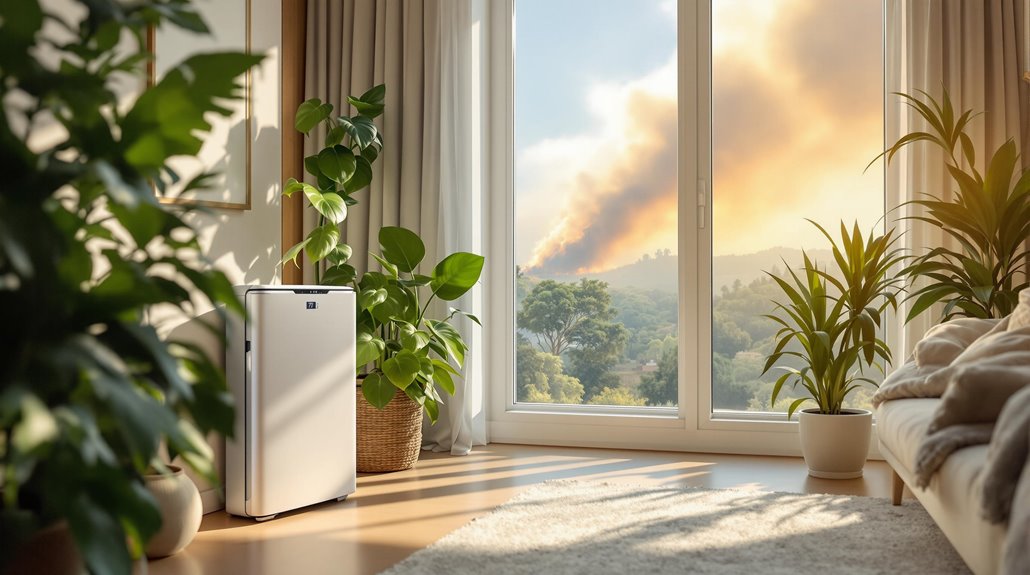
When wildfire smoke threatens air quality, maintaining a safe indoor environment becomes essential. To keep indoor air quality safe, it is advisable to run an air filter equipped with a HEPA filter. This effectively reduces PM2.5 particulate matter commonly found when residents encounter smoke.
Ensuring that doors and windows remain closed during wildfires is critical to prevent smoke infiltration, thereby safeguarding indoor air quality. Additionally, utilizing air conditioning systems with particulate capturing filters offers an enhanced level of protection against smoke pollution.
Regular monitoring of the Air Quality Index (AQI) provides valuable insight into the safety of the indoor environment. Adjusting activities, such as opting for indoor exercises over outdoor ones when AQI levels reach unhealthy ranges, helps minimize health risks associated with smoke exposure.
These precautionary measures collectively contribute to a safer, healthier indoor atmosphere during wildfire events, emphasizing the importance of proactive air quality management.
Protect Your Health During Wildfires
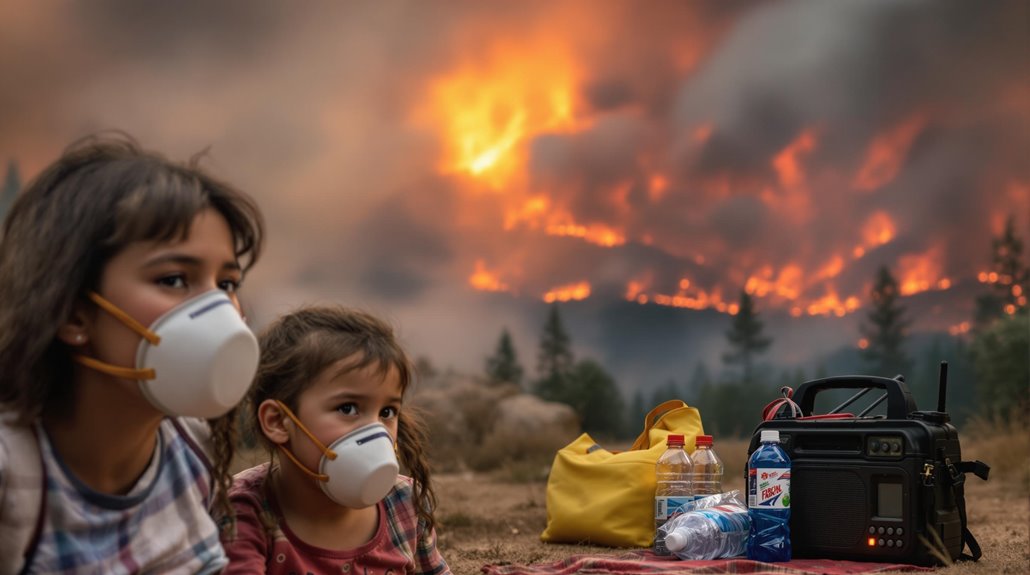
How can individuals effectively safeguard their health during wildfires? Understanding wildfire risk levels is vital, especially when air quality deteriorates. Regularly monitor the Air Quality Index (AQI), which categorizes health risks from Good to Hazardous. At Unhealthy levels, sensitive groups should exercise caution. Engage in indoor activities and utilize air purification systems to limit exposure to harmful particulate matter (PM2.5) present in smoke, which can lead to respiratory issues. Refrain from outdoor exercise when AQI is deemed Unhealthy or Very Unhealthy to protect lung health.
Ensure a sufficient supply of necessary medications, particularly for individuals with chronic respiratory conditions, to avoid shortages during smoke exposure. Should symptoms like coughing, shortness of breath, or wheezing arise, seek medical attention promptly to prevent exacerbation of health conditions.
| Action | Guidance |
|---|---|
| Monitor AQI | Check regularly for current wildfire levels |
| Indoor activities | Prefer staying indoors with air purifiers |
| Avoid outdoor exercise | Especially when AQI is Unhealthy |
| Medication supply | Maintain ample stock for emergencies |
| Seek prompt medical care | For any smoke-related health symptoms |
Plan Outdoor Activities Wisely
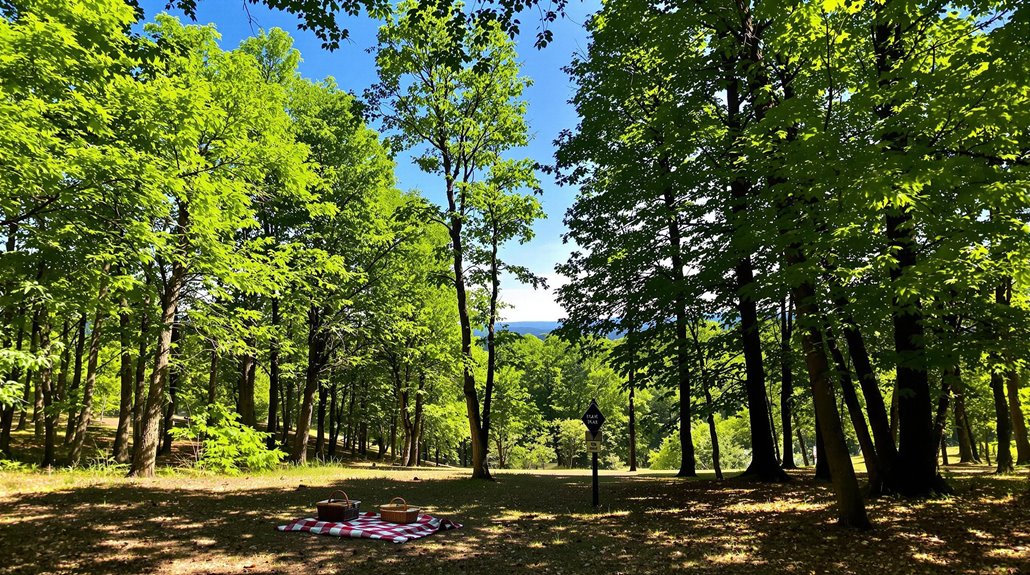
Before beginning outdoor adventures, individuals must prioritize safety by thoroughly evaluating wildfire risks. To plan outdoor activities wisely, it is essential to consult the Current Fire-Season Outlook Report at least four months ahead. This report aids in identifying regions with low wildfire risks, thereby ensuring a safer choice of destination.
Utilizing resources such as local ranger stations and fire management websites is essential for accessing updated information on active fire zones and trail closures.
When selecting a site, avoid high-risk (red) areas, opting instead for low-risk (green) destinations. This approach enhances safety by minimizing exposure to potential wildfires.
Monitoring alerts from the National Weather Service about heat and storm conditions in the chosen area helps in preemptively evaluating wildfire risks. Additionally, keeping track of the Air Quality Index (AQI) is important, as poor air quality may signify nearby wildfires, impacting health and safety during outdoor activities.
Safely Navigate Post-Wildfire Environments
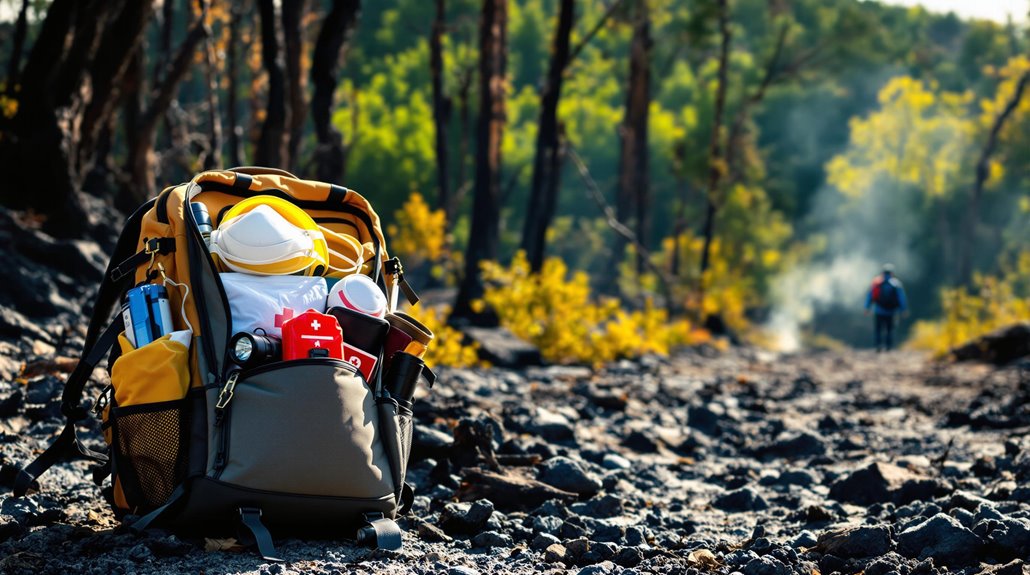
Maneuvering environments after a wildfire requires meticulous attention to safety protocols due to lingering hazards. Returning home should only occur once officials declare the area safe, as undetected embers and hazardous debris can still pose significant risks.
When cleaning up, individuals must wear protective gear—gloves, masks, and goggles—to minimize exposure to ash, which may contain harmful particles. It is vital to remain vigilant for unstable structures and fallen power lines, promptly reporting these dangers to local authorities.
Monitoring the Air Quality Index (AQI) is essential, as smoke and ash can severely impact air quality, necessitating respiratory health precautions. In addition, individuals should adhere to local health guidelines regarding drinking water safety.
Wildfires can contaminate water sources, compromising public water supply systems. Ensuring the safety of drinking water is paramount in preventing health risks. By following these guidelines, individuals can navigate post-wildfire environments more safely and effectively.
Frequently Asked Questions
What Are Some Wildfire Safety Tips?
Individuals should utilize fire resistant materials for home construction and create detailed evacuation plans. These plans include multiple routes and preparing a Go-Kit. Regularly updating emergency alerts and maintaining defensible space enhances safety during wildfires.
What Are the 4 Top Tips for Fire Safety?
Like a fortress against flames, fire prevention strategies include maintaining defensible space, checking local restrictions, equipping spark arresters, and monitoring air quality. Emergency preparedness involves keeping fire extinguishers and adhering to guidelines, ensuring thorough safety.
What Are 90% of Wildfires Caused By?
Approximately 90% of wildfires result from human activities, contrasting with natural causes like lightning. Key human factors include unattended campfires, discarded cigarettes, equipment use, arson, and indirect influences such as power lines and outdoor burning activities.
What Is the Best Defense Against Wildfires?
The truth of effective wildfire defense lies in creating defensible space through fire-resistant landscaping. This strategy, coupled with thorough evacuation plans, reduces property risk and enhances safety. Clear guidance guarantees homeowners maintain vigilance and preparedness against wildfires.
Final Thoughts
In the face of nature's fiery onslaught, preparing for wildfires is essential. By assembling an emergency go-kit, staying informed, and crafting an evacuation plan, individuals can arm themselves with knowledge and readiness. Understanding air quality and ensuring a defensible home further fortifies one's defense. Safeguarding health and planning activities wisely amidst the inferno's wrath are vital, as is maneuvering post-wildfire environments with caution. These precautionary measures are a lifeline in the blazing battle against nature's fury.
For homeowners facing wildfire-related property damage covered by their homeowners insurance policy, insurance industry professionals and legal experts strongly recommend consulting a qualified state-licensed public adjuster for damage or loss insurance claims. Public adjusters serve as dedicated policyholder advocates, working exclusively for the homeowner's benefit rather than the insurance company. These state-licensed professionals help policyholders navigate complex insurance policies, identify hidden damages often unknown to be covered, thoroughly document losses, and negotiate with insurance companies to ensure fair settlements while protecting policyholder rights.
Engaging a public adjuster can lead to maximized claim payouts, expedited claim processing, and reduced stress during insurance negotiations, allowing homeowners to focus on recovery. Policyholders seeking expert assistance with property damage or loss claims can request a no-obligation free consultation with a Public Claims Adjusters Network (PCAN) member public adjuster through our contact page.
